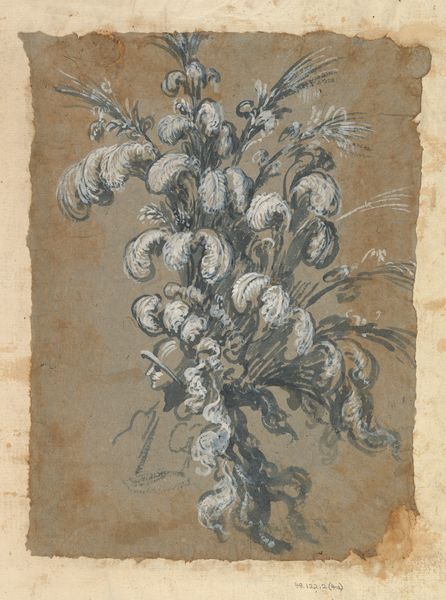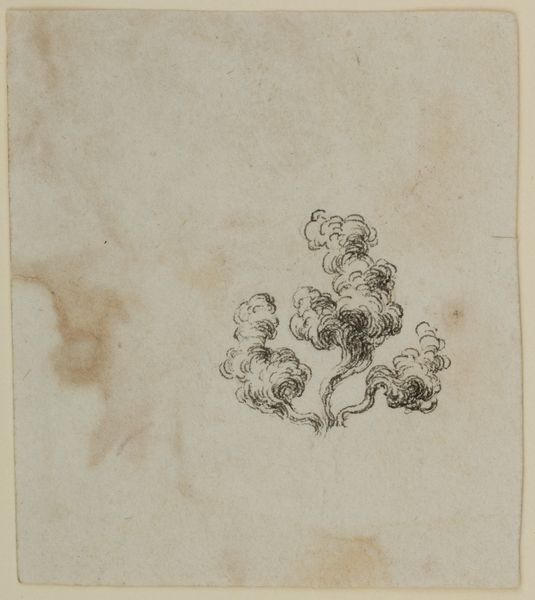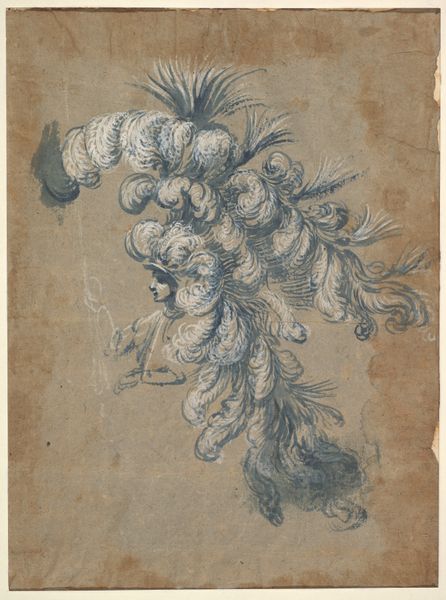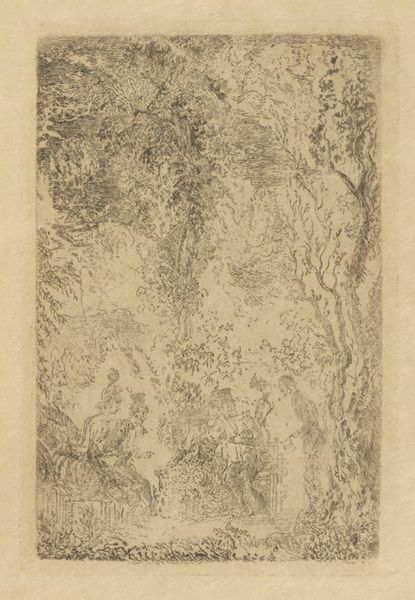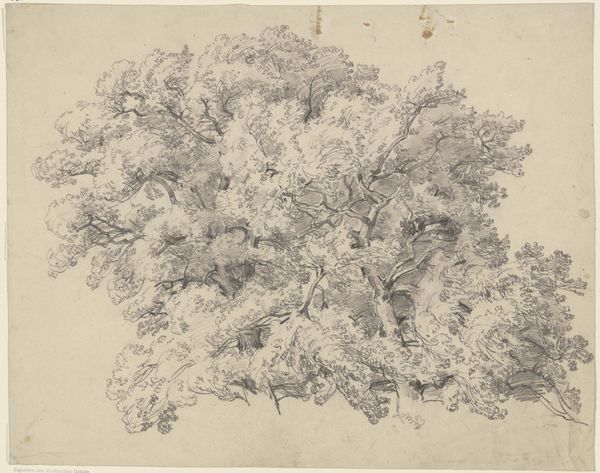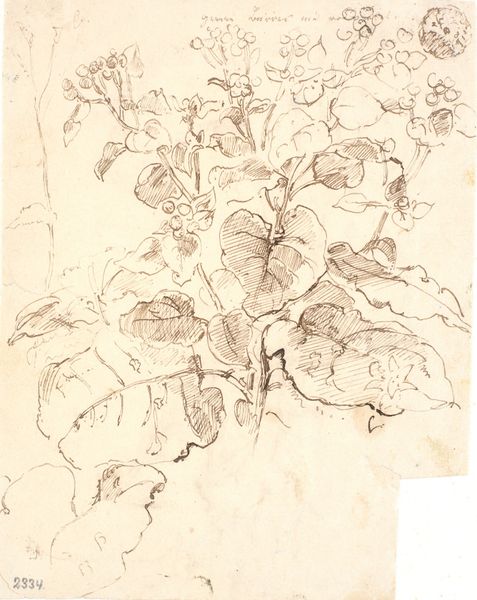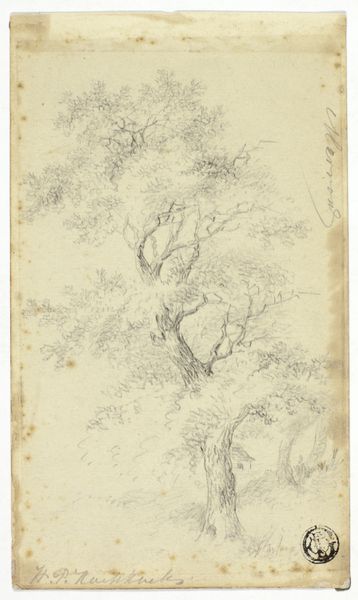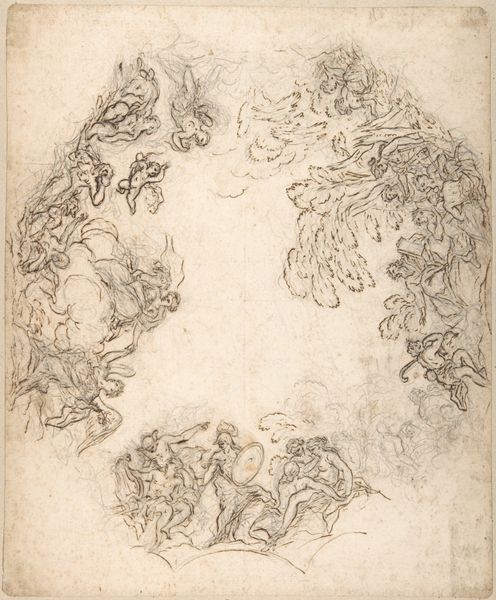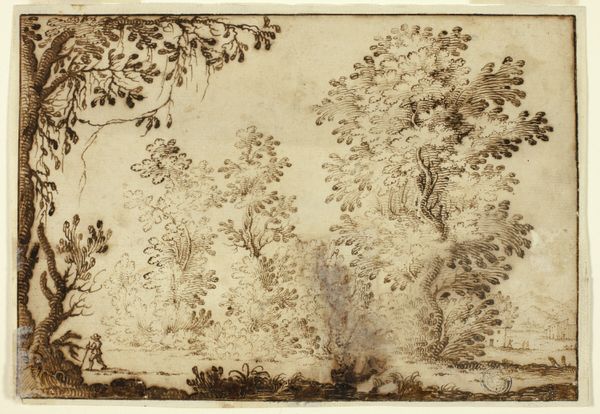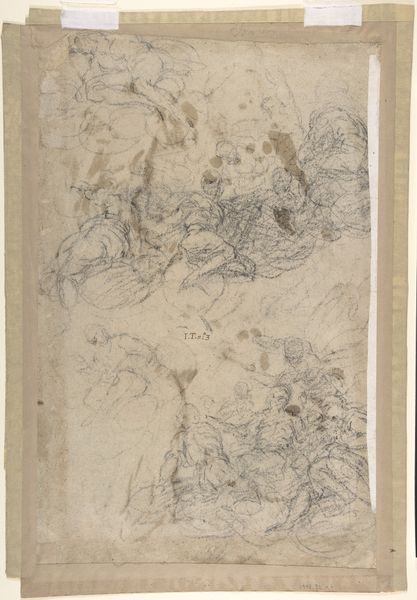
drawing, gouache, paper, chalk
#
drawing
#
gouache
#
landscape
#
paper
#
11_renaissance
#
chalk
Dimensions: 393 × 232 mm
Copyright: Public Domain
Curator: Take a moment to appreciate "Sketch of Foliage and Branches," a drawing crafted by Claude Lorrain circa 1645-1650. It’s composed using chalk and gouache on paper. Editor: My first impression is ethereal. The light and shadow play evokes a kind of melancholic grace. It feels less like a scientific rendering and more like a memory. Curator: Indeed. Lorrain was exceptionally attentive to natural effects of light, carefully rendering foliage. It reflects a wider engagement with landscape during the period, connecting idealized pastoral themes to evolving forms of labor and material engagement in nature. The gouache, layered atop the chalk, alters the surface, directing our vision and our tactile response to the image. Editor: What strikes me most are the shapes of the leaves and branches. There's a delicate, almost lace-like quality to the rendering, giving the tree a distinct symbolic identity. Does this kind of detailed foliage relate to established motifs or perhaps personal iconography employed by the artist? Curator: Absolutely. During the Renaissance, we saw this explosion of landscape art alongside growing debates around the nobility of landscape as subject. Looking at how the materials, chalk and gouache, were produced and made available reveals the socioeconomic shifts and how landscape representation reflects the labor inherent in resource extraction. Editor: But look at how light itself transforms the work. In my perspective, the symbolism evokes this constant cycle of life and nature itself. This makes me consider the piece and how the meaning would evolve through viewers over time. It encourages viewers to project feelings of mortality, resilience, maybe even peace. Curator: I agree! It's crucial to examine how labor and material conditions allow those visions. Editor: Examining it now through that lens does change my view, I appreciate the new understanding. Curator: It’s a vital connection; one vision arising from considering the means of production of a physical piece!
Comments
No comments
Be the first to comment and join the conversation on the ultimate creative platform.
